#emperor yongzheng
Text

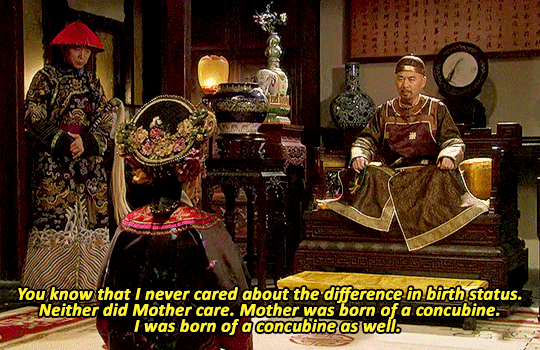




Your Majesty put this pair of jade bracelets on my wrists yourself when I first entered the prince's manor. We were hoping that like those bracelets, we would see each other day and night. But now Your Majesty believes that I've done wrong, and perhaps doesn't wish to see me again. At that time, with these bracelets at hand, Your Majesty told me, that if I gave birth to a prince, the position of Fujin would be mine.
LEGEND OF ZHEN HUAN | Episode 72
#legend of zhen huan#empresses in the palace#甄嬛传#cdrama#cdramaedit#cdramasource#perioddramaedit#perioddramasource#onlyperioddramas#gifshistorical#asiandramanet#asiandramasource#dailyasiandramas#*mine#ada choi#蔡少芬#chen jianbin#陈建斌#ulanara yixiu#emperor yongzheng#top tier writing and acting in this scene#I love how yixiu gives an entire speech to make it clear she always wanted the fujin position#and then the emperor is like “okay but why weren't you satisfied with the ce'fujin position?”#like dude did you listen to a word of what she just said??
83 notes
·
View notes
Photo
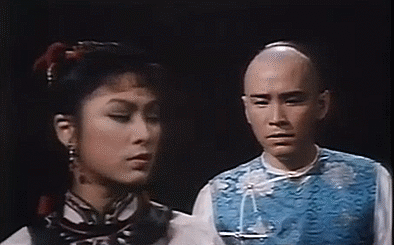
50 Years, 50 Gifs
Dynasty | 大内群英 [RTV, 1980]
9/50
#michelle yim#米雪#john chiang#姜大衛#alex man#萬梓良#dynasty#大内群英#Rediffusion Television#hkdrama#yongzheng emperor#qing dynasty#michelle x john chiang true pairing when#he always got relegated to second place next to Damian and Alex#like she's been paired with his older brother Paul Chun but not with John? what?
8 notes
·
View notes
Photo

'Taejong Yi Bang-won' Kim Min-ki, Kim Bi-ju tears are silent.
#Taejong Yi Bang-won#Queen Soheon#Yongzheng Emperor#Ju Sang Wook#Treaty of San Francisco#taejongiwon#Kim Min-ki#Ido language
0 notes
Note
Have y’all seen any of Blooming Days yet? I’m curious about the ML’s set up of his harem (forgot his name). I’ve never quite seen anything like it and i was wondering if y’all had any info on it. i have heard of the primary wife and secondary wife and concubines but the concept of a servant wife is something new to me!
(Also it’s so weird hearing someone else dub over he hongshan lol. I’m not used to her sounding like that!)
I haven't watched this drama yet but I'm assuming servant wife is something like a tongfang, which is just a servant that one of the masters of the house sleeps with. Technically a man can sleep with any woman under his rule in his household that isn't directly related to him, and the women all have varying degrees of status. I would say the difference between a concubine and a servant wife would be a concubine would probably have a maid to serve her. The concubine might be expected to still wait on the needs of the master and higher ranking wives but wouldn't be expected to do manual labour. A servant wife would still have to do whatever duties she's assigned while also not given the luxury to say no to the sex.
If she gets pregnant and gives birth to a boy, she might get promoted. Maybe. Probably not. The wife would probably just raise the kid and pretend the mother doesn't exist.
Also, the fact that this drama was originally based on an IP called Xi Fei Zhuan, and thus is supposed to be the story of Emperor Yongzheng and Xi Fei (aka Qianlong's mother, aka "Zhen Huan") makes everything I've seen of it really seem...interesting. -h
16 notes
·
View notes
Text
Abridged History of Qing Dynasty Han Women’s Fashion (Part 3: Late Kangxi & Yongzheng Eras)
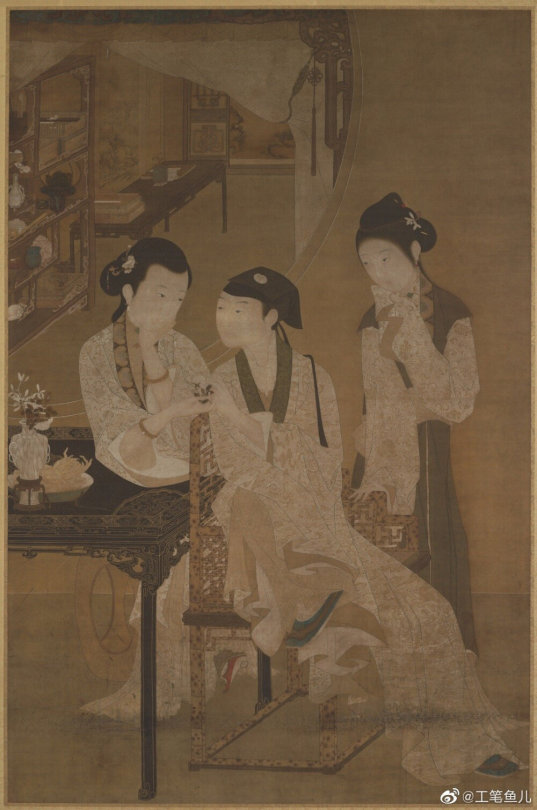
Previous posts:
Late Ming & Shunzhi era
Kangxi era
As the 18th century progressed past the reign of Emperor Kangxi, Han women’s fashion experienced further shifts in trend. The last two decades of the Kangxi era and the subsequent reign of Emperor Yongzheng (1722-1735) formed one relatively distinct aesthetic continuity, which is why I consolidated them as one time period.
The “peony hair” pompadour hairstyle, which began to move toward the back of the head at the beginning of the century, was now smaller, lighter and more delicate instead of one solid mass. The drooping swallow tail at the back of the head was often omitted and began to fall out of fashion. The popularity of the headband mo’e persisted, now worn slightly higher than before to conceal the hairline at the front altogether.
In terms of clothing, the same garments popular at the end of the Kangxi era continued to be popular, including the robe with standing collar, mamian skirt and the pifeng jacket (both its sleeved and sleeveless variations). Sleeves of clothing became gradually narrower as the decades progressed. Cloud collars were occasionally worn as well. Pifeng of this era not only had decorative facings at the collar, but also at the cuffs. They were often closed by a single, large, circular clasp button. The sleeveless jackets with attached standing collars popular in the Kangxi era seemed to have been discarded in favor of jackets with an open front and parallel collar, which showed the layer underneath. Repetitive roundel patterns remained a common decorative layout for robes.

Painting from the renowned series 雍亲王美人图, estimated to be produced around the 1710s or 20s. You can see the large clasp button on the pifeng.

Early 18th century painting showing a fashionable Han woman and a man in stylized Han costume.

Painting showing a group of women musicians, ca. second quarter of the 18th century. We can see the transitional nature of this period, as the older style of peony hair with twin swallow tails is present on the woman with her back to us, and the others have a simpler hairstyle without swallow tails. We can also see examples of the cloud collar, the larger red collar worn by the woman to the far right (who also dons a robe with paddy field patterns), and the smaller gebin on the woman with her back to us. I like how this image shows a variety of clothing styles that were available at the time.

Painting dated to 1726. The circular or semi-circular motifs on the facing of the jacket worn by the lady to the left were a common decorative pattern for facings of this period.
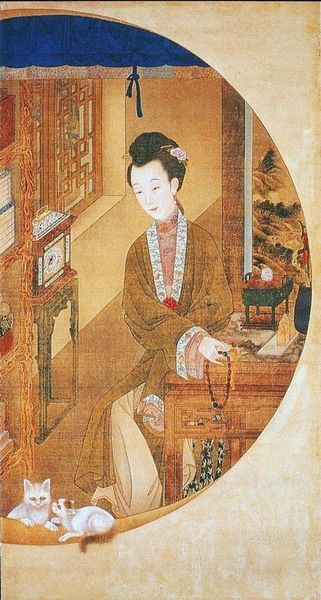
Another painting from 雍亲王美人图, showing a new hairstyle with hair coiled and piled toward the front.

Early 18th century painting. The robe is translucent, hinting at a domestic setting.
Fashionable accessories of this period include gold bird-shaped hairpins, the mo’e headband from previous decades, flowers, various hairpins and the newly popularized 项圈 xiangquan, a stiff, round, gold necklace with a decorative piece at the center front.

Screen from roughly the second quarter of the 18th century showing a group of women. The bird-shaped hairpin makes many appearances, as well as the mo’e. Two women are wearing the xiangquan.
For colder weather, the fur headpiece 卧兔 wotu or 昭君套 zhaojuntao was popularized. It resembled a length of fur worn around the head like a headband.

A wotu/zhaojuntao worn over a mo’e.

Painting from the series 燕寝怡情图册 showing a lady wearing wotu/zhaojuntao.
#qing dynasty#18th century#kangxi era#yongzheng era#chinese fashion#fashion history#abridged history of qing dynasty han women's fashion
98 notes
·
View notes
Text



A teadust-glazed pear-shaped vase, Seal mark and period of Qianlong (1736-1795).
Note: This vase is especially attractive for its lustrous 'teadust' glaze. This type of glaze was an early 18th century innovation, probably introduced in the last years of the Yongzheng Emperor's reign, which became particularly popular during the Qianlong period. The glaze is a high-fired crystalline one, with numerous iron and magnesium crystalline particles that have reacted with silicate acid suspended on the glaze surface. The precipitation of the yellow crystal against a dark green background produced what is known as chayemo or 'tea-leaf dust' glaze effect. Perfectly fired vessels in this glaze, such as the present vase, have many small stipples that make the glaze appear particularly rich and velvety to the touch.
Courtesy Alain Truong
47 notes
·
View notes
Text
Emperor Qianlong and his influence on the Qing Dynasty
Qianlong (乾隆皇帝) , personal name “HongLi” was born on September 25 of 1711 in Beijing, China.
He was the fourth and favorite son of Emperor Yongzheng and ascended the throne in 1735 and reigned for more than 60 years.
The Emperor had a strong resilient spirit as he excelled both in military campaigns, allowing China to flourish with the chinese empire reaching its peak years during his 60 year reign, but he was also an enjoyer of arts and literature preserving the spirits of his father and grandfather who where both equally invested in this aspect.
During his lifetime he had about 50 consorts and concubines that served him including 3 empresses, 5 imperial noble consorts, 5 noble consorts, 6 consorts, 6 imperial concubines, 12 noble ladies, 4 female attendants, 5 “choice ladies” and 2 GeGe (格格)
the most famous out of all of them was Ula Na’ra (The Empress Nara of the Nara clan) (i will make another post explaining this and getting more in depth with her personal story)
now there are a lot of things i could say about Qianlong but it will be divided into many many parts as the story and dramas are never-ending (why do u think there are so many series based on him ?hahah)
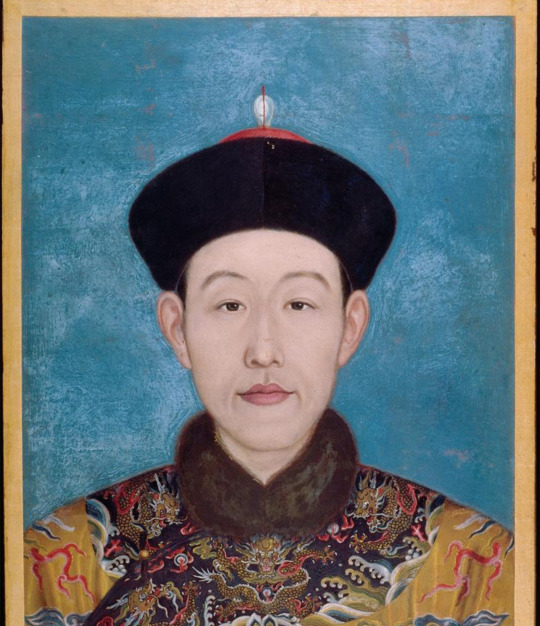

Qianlong

Empress Nara
if u read my previous post you’ll know why she’s wearing three earrings in each ear 😏😙
*fun fact Qianlong is believed to have destroyed all of her portraits so we don’t actually know if this is actually her*
(Chinese equivalent of Anne Boleyn ??)
#china#chinese history#history#qing dynasty#education#language#qianlong#qing#ancient china#18th century
3 notes
·
View notes
Text


Ruyi approves!! Honestly the couples in this series are SO much better done than in L of ZH till the moment (I'm looking at you, weird Shen Mei Zhuang & Wen Shichu arc), I think it partly has to do with this one focusing a little bit more in servants' lives, but also because love in general it's more important here. While the only mutually loving relationship that gets screentime of L of ZH is there to show the contrast between Zhen Huan's ideal life and the one Yongzheng gave her ("what I really wanted, you have taken from me"), love is a central theme in its sequel, as its name confirms. Ruyi does partly get what she wanted because she loves the emperor and it's tragically prepared to endure everything for him, so this is less about the path of a concubine trying to survive and more about the path of a wife trying to protect her marriage and it's already destroying me, this guy doesn't deserve you
#yep... I was forced to abandon my hopes for my guy Li Yu 💔#ruyi's royal love in the palace#watching ruyi
3 notes
·
View notes
Text
Hongli aka Qianlong and Ruyi!Yongzheng
In Ruyi's Royal Love, it is mentioned that in the early episode that he once watched Emperor Kangxi drawing bamboos with red ink while Yongzheng stated he is jealous towards his own son due to he got the privilage to bonding with Emperor Kangxi 🤔
But I thought in Empresses in the Palace, Kangxi dislike Qianlong due to his birth mom who was a low rank maid and had a fight with Yongzheng due to this matter 🤔
Or maybe that scene is a shout out to IRL!Qianlong who is loved by Kangxi and Yongzheng's promotion as an emperor is due to Qianlong (he wanted his best royal grandson to become an emperor) 😂😂😂
#ruyi's royal love in the palace#legend of ruyi#empresses in the palace#just random ramblings#ruyi's royal love always have this kind of shout out to IRL#another one is Mei taunting off Hui's age#since IRL!Ruyi aka Step Empress Nara is way younger than IRL!Hui aka Imperial Noble Consort Huixian
5 notes
·
View notes
Text
Hi Producer (正好遇见你) Infodump
Disclaimer: I have no idea about the accuracy of the information shared in the drama, I'm merely transcribing for future reference purposes. Proceed with caution!
.
Ep 20-21: Woodblock Printing

"Modern printing technology can print 10000 pictures in an hour. It only takes months to train an operator. With woodblock printing, each block is carved by hand. It takes five years to train a master craftsman. Eight years to replicate 'Along the River in the Qingming Festival'. From planning to finishing, 'The Night Revels of Han Xizai' took 20 years. Though labor-intensive and time consuming, the result is lifelike and cannot be done by machines."



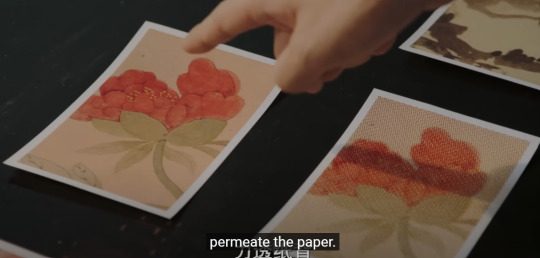
.
Ancient Painting Mounting
Rather than screenshotting I'll link the timestamp as there's a detailed demo segment.
youtube
When the recipe of glue hadn't been modified, moldy glue had a high rate of causing cancer. Therefore, many professional framers were diagnosed with occupational hazards like cancer.
.
Traditional Chinese watermark printing
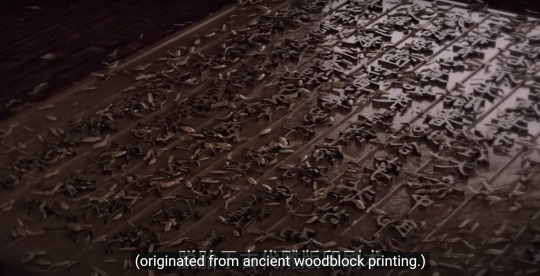
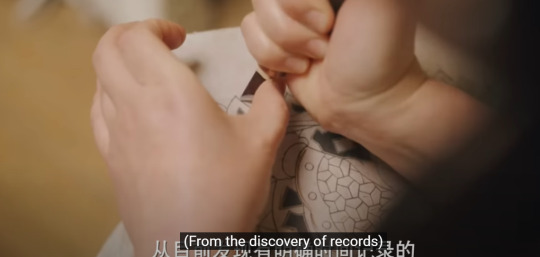
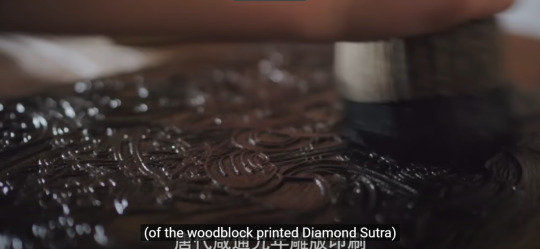
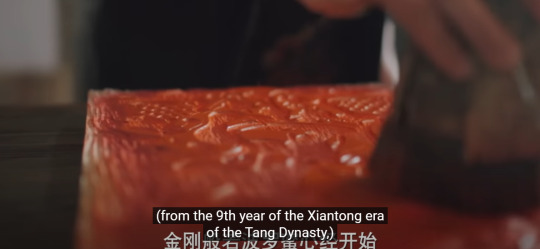

Slowly adapted to the palace, it went from religious uses to secularity.



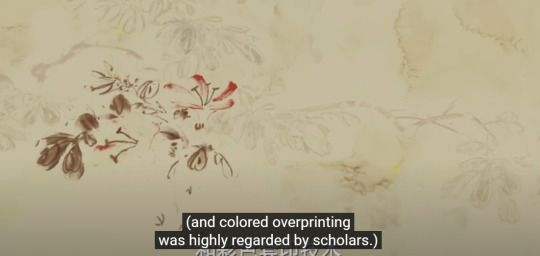
Shouhuazhai uses the technique of assembled block gonghua prints as foundation and combined it with painting, carving and printing to recreate many renowned paintings.
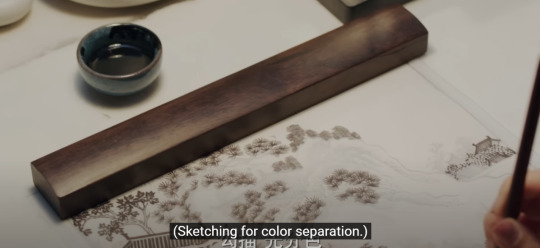


"The number of color schemes will decide how many blocks are needed. During the sketching process, a celluloid block is used as a trace cover for the original work. A very thin sheet of yanpi paper is put on top of the already sketched celluloid block for second-time sketching.
Edge cutting of Block carving is the second step of the technique. It is to paste the sketched yanpi paper on the woodblock for carving.



Brush printing is the last step of this technique. After the carving of blocks is complete, the carvings are traced into pictures. The paper, ink, and colors used in printing must be the same as the original work. The ratio of paint, water, and glue is very important. To have the same degree of saturation and shades as the original work, they usually have to go through countless trials.
To comprehensively recreate ancient paintings, the meaning and spirit of the original painting must be captured. This requires more than the honing of skills.
Due to the temperature and humidity, old paintings and replicas must be handled with great care. When the paintings are too big the connecting point will easily split. This step is called "shang qiang," meaning putting it on the wall. "
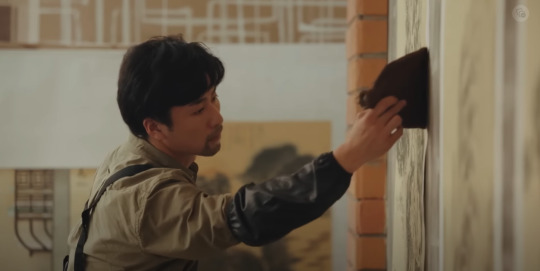

.
Emperor Yongzheng's Twelve Beauties
The drama takes this set of famous paintings as a subject and weaves an elaborate story about how they are based on Emperor Yongzheng's beloved Imperial Consort Dunsu of the Nian family (yes, Hua Fei from Zhenhuan Zhuan/Empresses in the Palace), how she had these likenesses done while sick and in seclusion, to reassure the emperor that she's healthy and happy. She has the original paintings "edited" and replicated as in drawn-over to hide the stains of her blood splattering on one spot from a coughing fit, and has her expression fixed to look smiley etc. This is highly likely pure fiction, from what I've gathered the details about the models of these 12 panels are unknown.
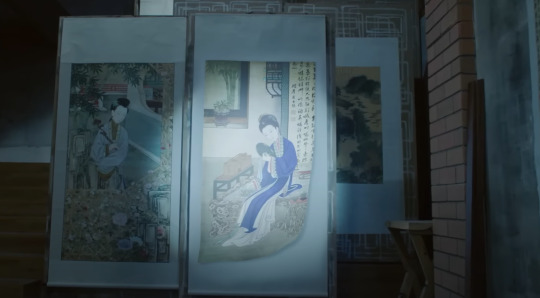
Also, additional meta: The drama did a great job recreating one of those 12 looks, but they made it seem like Lady Nian donned this hair just to pose for this picture, that her regular hair is with a Liangbatou.
In her normal getup in the poster and flashback scene she seems to be wearing a Changshan and a skirt, for the painting she's wearing a pifeng over what seems to be a Changshan tucked under the skirt.
Ref:
This is really nice because this is what the Han noblewomen wore in the era (Manchu women wore a single layer floor length robe with no raised collars, and hair in braided buns), and Lady Nian is Han. But the hair puzzles me. From what I heard Liangbatou is a Manchu-exclusive hairstyle, and ofc a million Qing harem drama predecessors didn't give a damn about mishmashing the stylings disregarding the era and ethnicities, BUT this drama already had the right hair done! Why change it back to something from the future and something she wouldn't wear regardless the time?
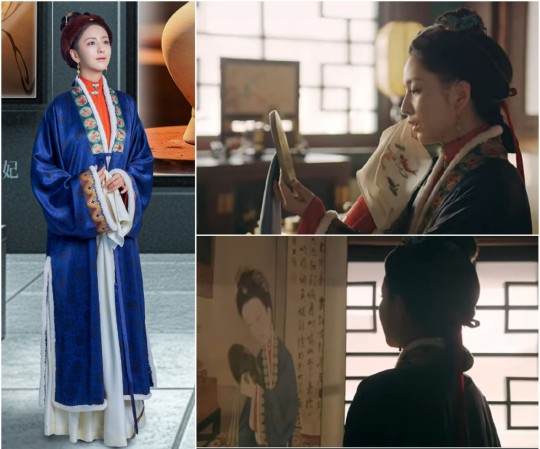
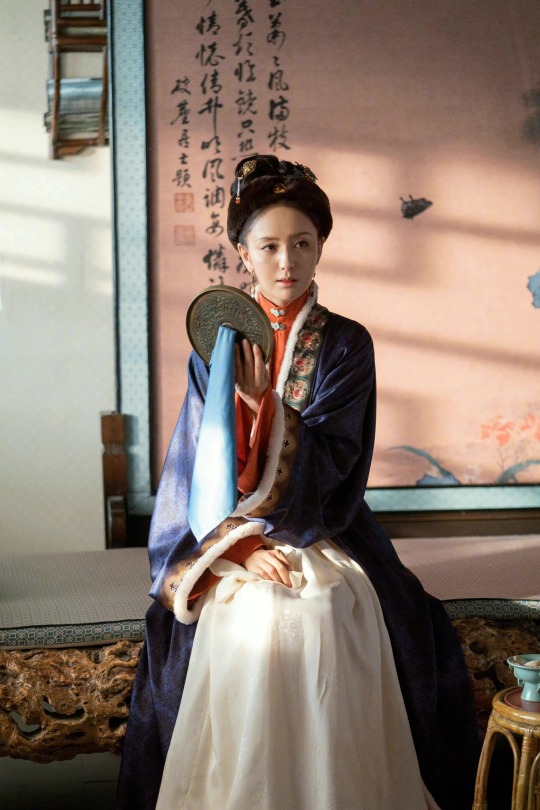

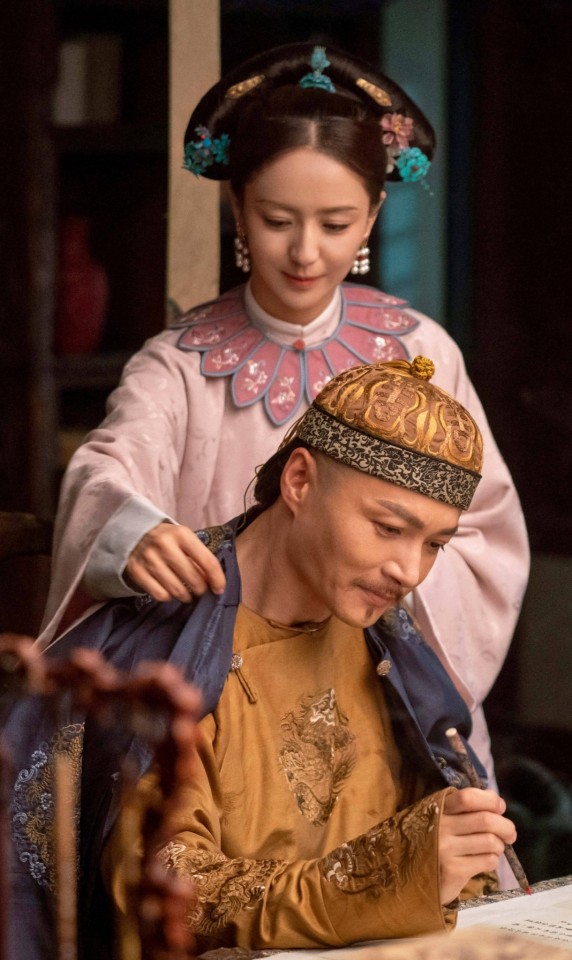
More straight-to-the-point documentary segment about what woodblock printing is about from 34:12 onwards here.
.
More Hi Producer posts
#cdrama#chinese drama#chinese history#ming dynasty#qing dynasty#woodblock printing#chinese paintings#hi producer#正好遇见你
2 notes
·
View notes
Text
Historical Chinese Drama Deaths That Broke Me (11/?)
Ling Yunche, Eunch of Yikun Palace (Again the Emperor’s a asshole)




With Ling Yunche the only reason he died was because of this crush on Ruyi. I don’t hate Hailan at all of what she did because Hailan should not have had to do that if Emperor wasn’t a asshole just like this father but the difference is that Ruyi was completely innocent where as with Zhen Huan no one wouldn’t have know if Yunli (the Emperor’s half-brother) didn’t bring her up every time he wrote to the Yongzheng Emperor.
#ling yunche#ruyi's royal love in the palace#legend of ruyi#historical chinese drama deaths that broke me
31 notes
·
View notes
Text

“Commissioned in 1728 as a kind of pictorial inventory of emperor Yongzheng's favorite antiquities from the imperial collection, the 60-foot-long handscroll Guwan Tu, or "pictures of ancient playthings," depicts about 250 assorted objects with such detail that corresponding physical objects have been identified and experts still rely on it to verify antique porcelain and other collectibles. © The Trustees of the British Museum”
From: “ the porcelain thief:  searching the middle kingdom for buried China” by Hsu, Huan; 2015.
3 notes
·
View notes
Note
Any facts about qinying(ruyi) in the novel? like her talents and skills and hobbies and her education? her life before marrying hongli and her life after but before hongli becoming emperor?
eh I didn't read the novel that closely it's way too long and complex, and I have a complicated relationship with Chinese novel translations. but AFAIK it sort of only went into her family's reaction at her being chosen as a ce fujin but other than that we don't get a lot of her life before marriage. it's probably for the best, there's quite a lot going on already. the novel opens with yongzheng's death so there's not much before hongli becomes emperor either, I think the backstory was mostly just told to us. I only read very specific parts of the novel so don't quote me on this. -h
4 notes
·
View notes
Text
Dowager Noble Consort Ying

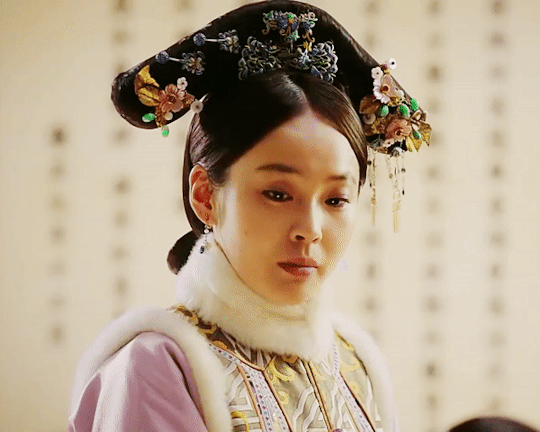

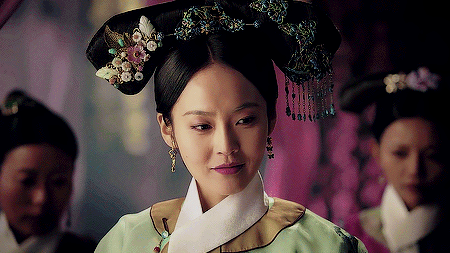
Daughter of Naqin. Master Commandant of Light Chariot
Consort of Aisin-Gioro Hongli, Qianlong Emperor
Titles
During the reign of the Yongzheng Emperor (r. 1722-1735)
Lady Barin (from 7 March 1731)
During the reign of the Qianlong Emperor (r. 1375-1796)
Noble Lady, sixth rank consort
First Female Attendant Na (from January/February 1748), seventh rank consort
Noble Lady Na (from May/June 1748), sixth rank consort
Concubine Ying (from 30 July 1751), fifth rank consort
Consort Ying (from 4 February 1760), fourth rank consort
During the reign if the Jiaqing Emperor (r. 1796-1820)
Noble Consort Ying (from November/December 1798), third rank consort
17 notes
·
View notes
Text


An eel-skin-glazed three-handled meiping, Seal mark and period of Yongzheng (1723-1735).
Under the Yongzheng Emperor, craftsmen were directed to use antiques in the Palace collection as standards for quality, models for archaistic designs and as inspiration for innovation. The simplicity of form and absence of decoration were stylistic trends introduced by Tang Ying (1682-1756), superintendent of the imperial kilns in Jingdezhen.
Courtesy Alain Truong
21 notes
·
View notes
Note
Are there any other things that you feel like passionately info dumping about this evening?
The Step Empress, or Empress Nara, was the second empress consort of the Qianlong Emperor.
There is some debate as to her surname, as some sources have it as Ulanara and others have it as Hoifanara. ‘Nara’ could simply refer to a region also so it’s a bit tricky. Anyway she was a Manchu noblewoman and married into the house of the Qianlong Emperor( The yongzheng emperor’s fourth son, hongli), then Prince Bao, as his secondary consort. When Prince Bao ascended the thrown she was given the title of ‘Consort Xian’.
Now the Qianlong Emperor really loved his first wife, Empress Fucha. Like he wrote poems for her years after her death about how much he missed her. When she died, he was loathe to appoint a new Empress but his mother (another fav of mine) had already decided that Lady Nara would take the position.
Despite giving birth to three of his children and being highly favored by both his mother and the Emperor himself, Empress Nara would quickly lose that favor by cutting her hair.
Generally speaking, cutting your hair was a HUGE cultural taboo in China. Manchu customs at the time dictated that they could only cut their hair when they were in deep mourning. Her cutting her hair was seen as a curse on the Emperor or the Empress Dowager.
Although her title was never officially removed, she quickly lost her authority and the Emperor decreased her provisions significantly.
When she died in 1768, the Emperor ordered that her funeral arrangements be that of an Imperial Noble Consort rather than an Empress, however they were scaled down even more so. She was even buried next to Imperial Noble Consort Chunhui rather than being entombed near the emperor’s future resting place
16 notes
·
View notes